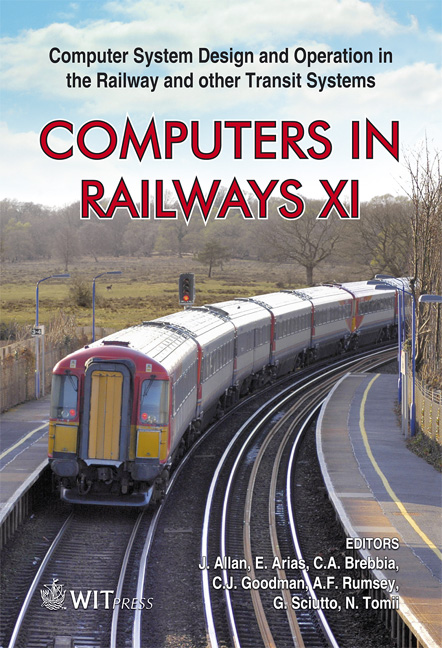Technical Development At The 2TRAIN Project
Price
Free (open access)
Transaction
Volume
103
Pages
10
Page Range
819 - 828
Published
2008
Size
578 kb
Paper DOI
10.2495/CR080791
Copyright
WIT Press
Author(s)
J. M. Mera, L. Brue, M. Hintenender, A. Gil & L. M. Gutierrez
Abstract
The establishment of safe, competitive, and interoperable railways in Europe requires giving particular attention to the formation and qualification of train drivers. Moreover, as Europe grows together and cross-border operations increase there is a strong need to harmonise and coordinate the education of train drivers concerning general driving and operational abilities as well as particular crisis management competencies. Important benefits can be obtained by the use of computer-based systems and simulators in training, with the usage of these technologies training sessions can be composed of different technical failures and hazardous operational situations of which many cannot be trained in reality, furthermore, it is possible to replicate scenarios at any given time. The 2TRAIN project (Training of Train Drivers in Safety Relevant Issues with Validated and Integrated Computer Based Technology), financed by the 6FP of the European Union, aims to develop European best tools and guidelines for efficient, safety enhancing and cost-effective use of modern technologies for training as well as for ongoing competence and performance assessment. The starting point of 2TRAIN was a benchmarking of training technology, contents and models already in use in Europe. In addition, to reach a harmonisation of today’s training technologies and to allow a standardised driver evaluation, a set of common software modules are currently being developed, the first of these modules is the common data simulation interface, this interface will be implemented into three simulator pilots as the linking point between existing technologies and new modules. In the second step common training simulation scenarios will be created, five European operators will use them for training experienced and inexperienced drivers. The trainees’ actual behaviour will be compared to predefined target behaviour by the virtual instructor module in real time. This target behaviour will be defined by a rule-based expert system, the information for building up this expert system will be derived from the rulebooks and directives of the railway undertakings, but \“real instructors” will be able to adjust and create new rules. The results of the assessment will be stored in an assessment database that could be used as a base for the development of further add-on systems. The quality of 2TRAIN is ensured by a close collaboration between operational railway companies (CD, DB, Metro de Madrid and SNCF), simulator developers (CITEF, CORYS T.E.S.S. and KMW) transport institutions (IJP, RTI), universities (IZVW, UP) and by the strong support from a user group that consists of further European stakeholders. Keywords: computer-based training, driving simulation.
Keywords
computer-based training, driving simulation.





